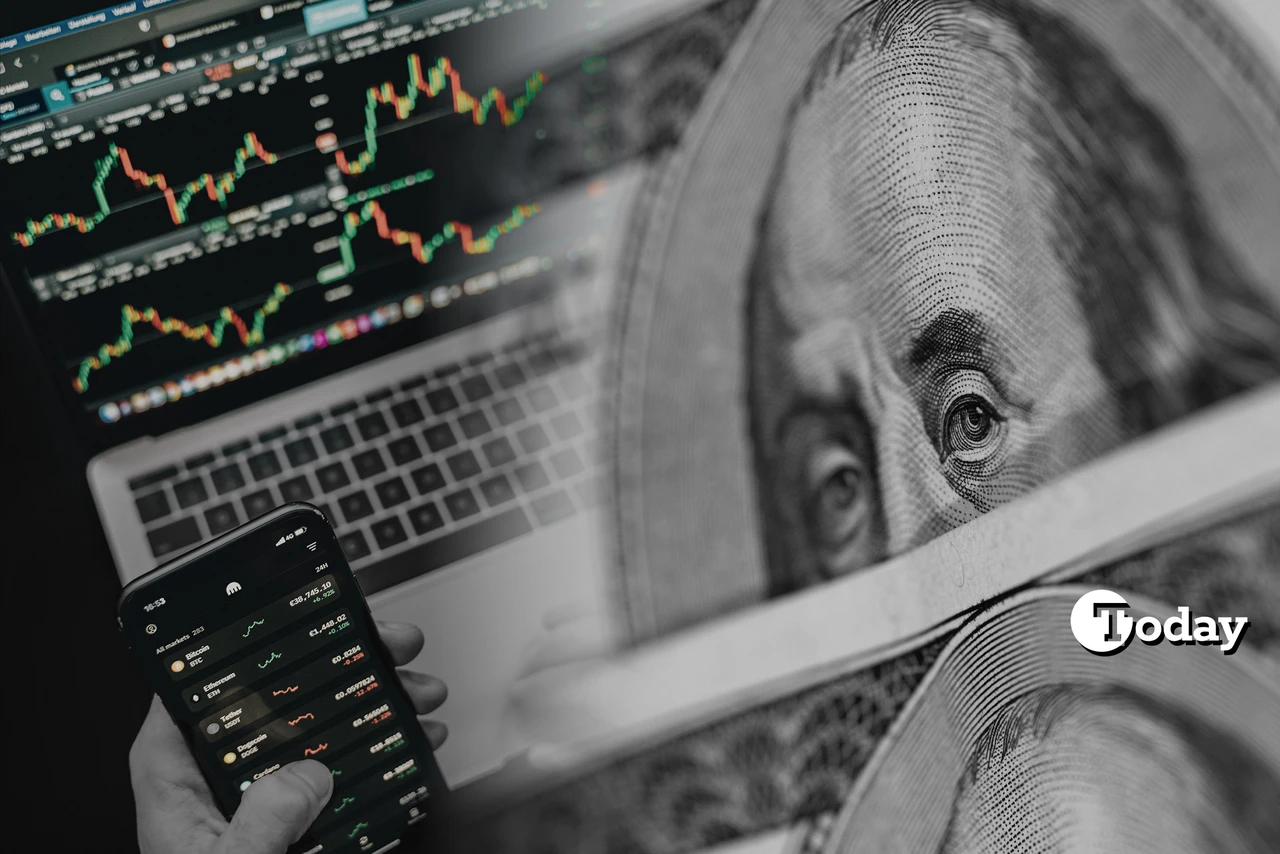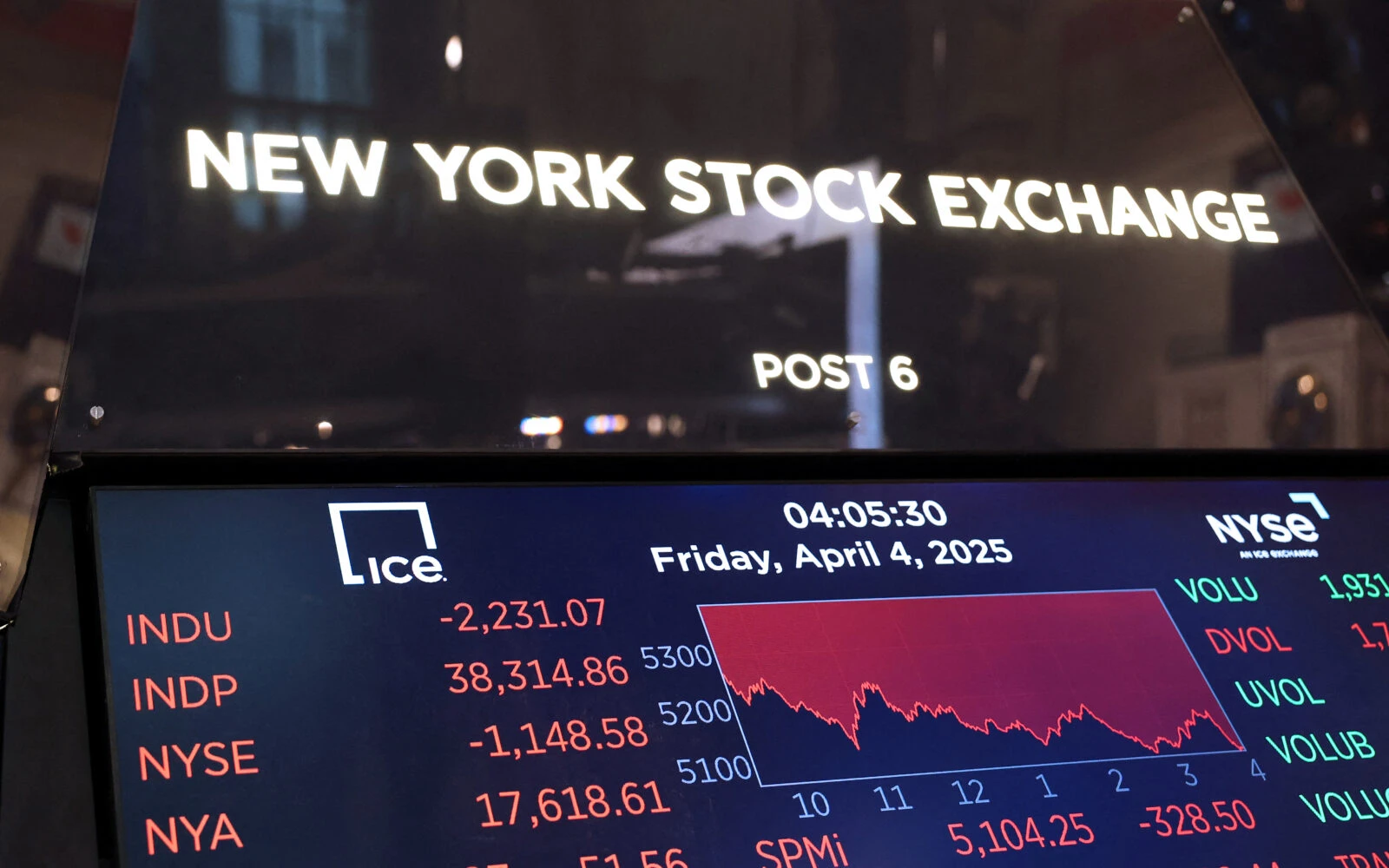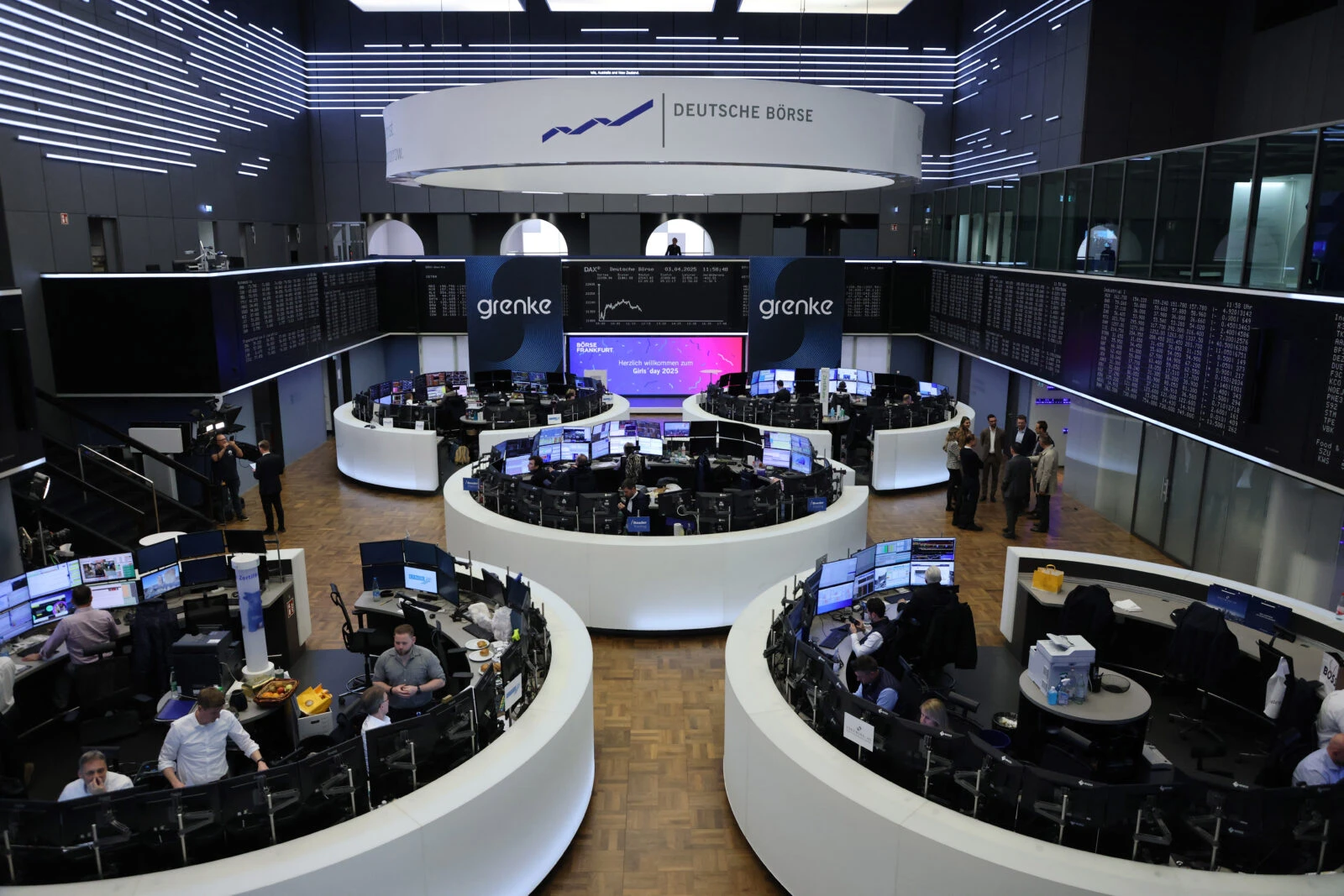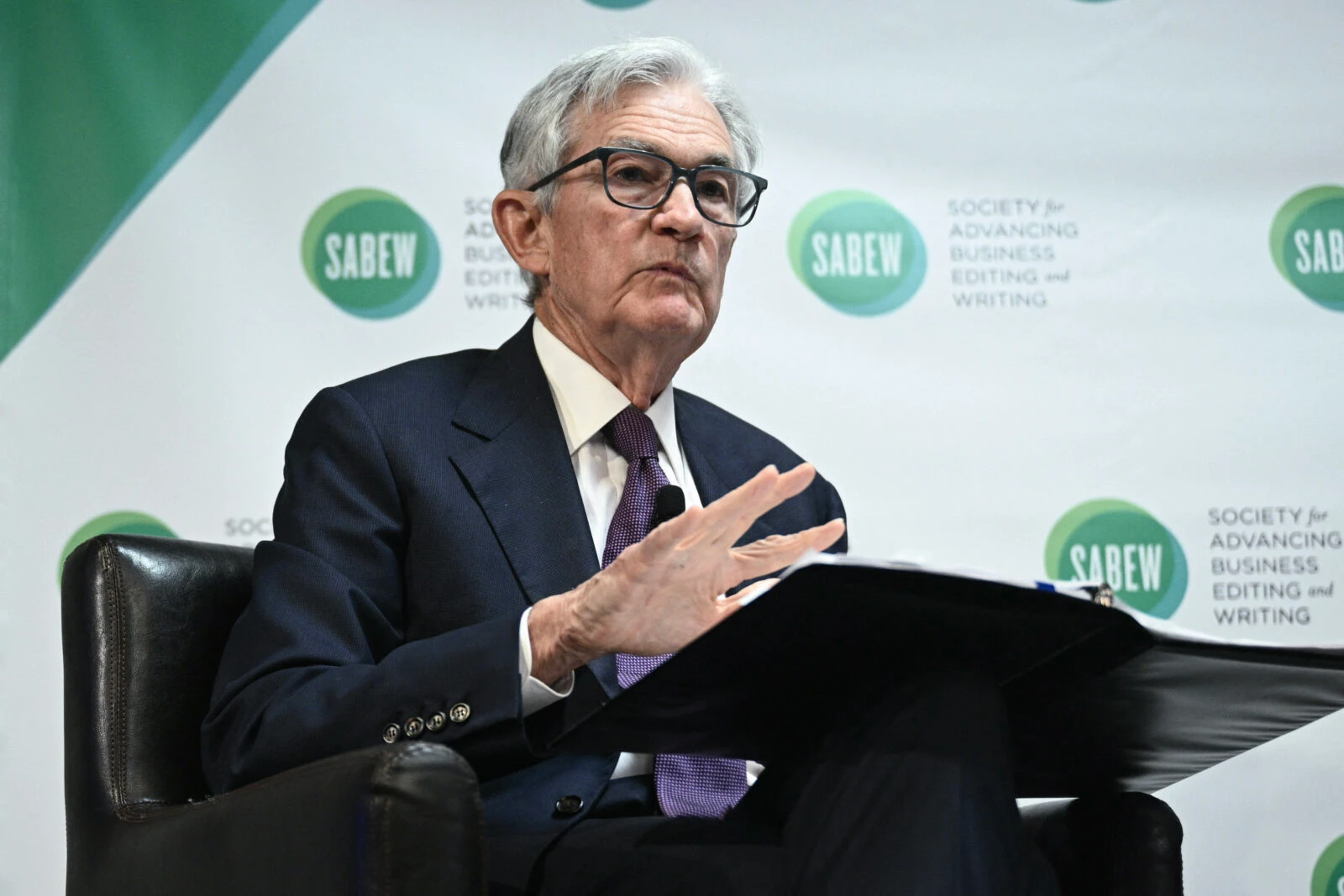Trump tariffs squeeze US markets, triggering steepest losses in 5 years
 Photo illustration shows market data and a close-up view of a U.S. dollar, symbolizing growing concerns over tariffs, inflation, and global market instability. Created on Apr. 5, 2025. (Collage by Türkiye Today)
Photo illustration shows market data and a close-up view of a U.S. dollar, symbolizing growing concerns over tariffs, inflation, and global market instability. Created on Apr. 5, 2025. (Collage by Türkiye Today)
U.S. stocks ended the week with their steepest losses since June 2020, as the trade war intensified following China’s retaliation to President Donald Trump’s reciprocal tariffs unveiled on Thursday.
China imposed a 34% retaliatory tariff on all imports from the U.S. on Friday, a move seen as a tit-for-tat against Trump’s 34% reciprocal tariffs. The tariffs, set to go into effect next Thursday, will affect all U.S. products imported to China.
Chinese countermeasures fueled the recent panic in global markets, as the Dow Jones Industrial Average—which tracks 30 major U.S. companies and is a key indicator of overall market health—plunged 5.50%, or 2,231.07 points, to close the week at 38,314.86—its largest drop since June 2020—pushing it into correction territory.
The S&P 500, which tracks 500 of the largest publicly traded companies in the U.S. and is considered the broadest measure of the American stock market, slipped 5.97%, or 322.44 points, to close at 5,074.08. This marked its biggest fall since March 2020 and left the index over 17% below its recent high.

The Nasdaq Composite, known for its heavy weighting of technology and growth stocks, fell 5.82%, or 962.82 points, to 15,587.79. The drop brought the index down 22% from its December record, officially entering bear market territory—defined as a decline of 20% or more from a recent peak.
European markets also ended the week sharply lower, with Frankfurt’s benchmark DAX index sinking nearly 5% and London stocks posting similar losses.

The dollar rebounded against the euro and pound, having fallen sharply Thursday on fears of a recession in the United States.
The massive two-day sell-off wiped out more than $6 trillion in market cap, bringing total losses in U.S. markets since Trump’s inauguration to nearly $10 trillion, according to the Dow Jones.
The VIX Index, commonly referred to as the “fear index,” measures market volatility and investor anxiety based on S&P 500 options trading. It jumped 50.93% to 45.31 on Friday, marking a two-day surge of over 160% and reflecting heightened uncertainty and growing risk aversion among investors.

Gold, the world’s foremost safe haven asset, which had maintained a record-breaking streak since Trump’s inauguration, also saw a sharp decline—falling 2.42% from its all-time high, depreciating by $100 to $3,037. U.S.-based investment bank Goldman Sachs attributed the unexpected drop to broader equity market weakness, suggesting the retreat may present a buying opportunity.
In contrast, bitcoin, the world’s largest cryptocurrency, remained largely unaffected, hovering steadily around the $83,000 mark.
Oil prices were also hit hard, as Brent crude futures fell 7% on Friday, dropping below $65 per barrel for the first time since August 2021.
Trump calls for confidence in tariffs, resilience in the plan
On the positive side of macroeconomic data, the U.S. added 228,000 jobs in March, significantly exceeding the forecast of 137,000, the U.S. Bureau of Labor Statistics reported on Friday. However, the unemployment rate rose to 4.2%, slightly higher than the expected 4.1%.
Commenting on the figures, Trump emphasized that the numbers were better than expected, claiming that tariffs are beginning to heal the U.S. economy. “IT’S ALREADY WORKING. HANG TOUGH, WE CAN’T LOSE!” he wrote on his social media platform, Truth Social.
Regarding China’s counter-tariffs, Trump stated that Beijing has “panicked” in its trade policy response to his administration’s recent actions. “CHINA PLAYED IT WRONG, THEY PANICKED – THE ONE THING THEY CANNOT AFFORD TO DO!” he wrote in another Truth Social post.
‘Cut interest rates, Jerome’
Meanwhile, Fed Chair Jerome Powell said the tariffs were “larger than expected” and would result in higher inflation and slower growth. Powell made it clear that the Fed will not make rushed decisions in monetary policy.

“It is too soon to say what will be the appropriate path for monetary policy,” he said. “We will continue to carefully monitor the incoming data, the evolving outlook, and the balance of risks. We are well positioned to wait for greater clarity before considering any adjustments to our policy stance.”
Trump also slammed Powell’s remarks, urging him to “cut interest rates” and stop playing politics. “He is always late, but he could now change his image, and quickly. Energy prices are down, Interest Rates are down, Inflation is down, even Eggs are down 69%, and Jobs are UP, all within two months.”
Trump’s tariffs have been viewed as an unprecedented threat to global economic growth, which is already showing signs of weakness amid persistent inflation and rising geopolitical tensions. In response to these mounting concerns, the Federal Reserve has lowered its U.S. growth forecast for 2025 to 1.7%, down from 2.1%, while raising its inflation projection to 2.7%, up from 2.5%.
High interest rates make borrowing more expensive for both consumers and businesses, discouraging spending and investment. This, in turn, slows consumer demand, business expansion, and hiring. Although interest rate hikes are a key tool to combat inflation, they often come at the cost of slower economic growth—and in some cases, raise the risk of a recession. Such an outcome could derail Trump’s economic strategy, as his tariffs are primarily aimed at fostering robust domestic growth.
JP Morgan warns of inflationary pressures, recession risks
U.S. investment bank JPMorgan warned of rising inflationary pressures as new tariffs come into effect, raising its core inflation forecast to 4.4%. In a note released Friday, Chief Economist Michael Feroli also projected that the Federal Reserve would begin cutting interest rates in June, continuing through January, ultimately lowering the upper bound of the federal funds rate to 3%.
The bank cautioned that consumer spending may weaken as households become increasingly reluctant to dip into savings amid growing economic uncertainty. Feroli added that Chinese retaliation is likely to hurt U.S. exports and expects economic contraction in both the third and fourth quarters of this year.
As a result, JPMorgan revised its 2025 GDP growth forecast from 1.3% to -0.3%, citing the drag from tariffs. “The anticipated decline in economic activity is expected to pressure hiring and gradually push the unemployment rate up to 5.3%,” Feroli noted.
Earlier this week, British lender Barclays also forecast a U.S. economic contraction in 2025 “consistent with a recession.” Meanwhile, U.S-based Citi economists lowered their 2025 growth estimate to 0.1%, and UBS revised its projection to 0.4%.



